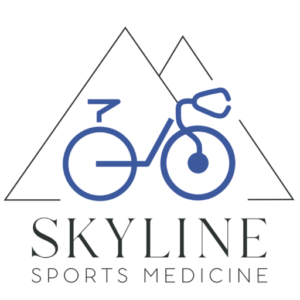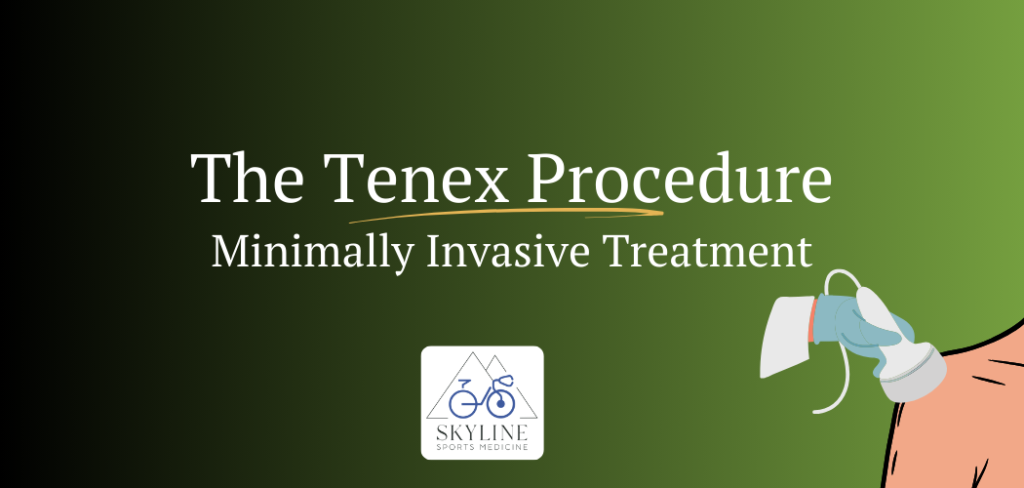Tendons play an important role in ensuring your bones and muscles are connected. However, they are also susceptible to damage if you get an injury or degeneration over time. Sports injuries are a common cause of tendon problems.
Research suggests that about six to seven million people experience a tendon rupture every year, which is only one of the conditions or occurrences that can cause problems with your tendons.
While surgery is sometimes necessary, the Tenex procedure also holds the potential for reducing pain and other symptoms in certain cases.
It’s also worth noting that Tenex can be combined with regenerative medicine techniques such as PRP or Clarix to optimize your results. You can discuss this option with Dr. Dani in clinic.
Book a Consultation with Dr. Svetlana Dani, MD
The Best Sports Medicine Physician in San Jose
Dr. Dani can help you get back to peak performance.
If you:
- Are Suffering From a Sports Injury
- Need Assessment and Advice on your performance
- Want Cutting-Edge Treatment & Rehabilitation
We Can Help
About the Tenex Procedure
Tenex is considered to be a minimally invasive procedure. It’s done with the help of ultrasound technology and a needle to remove scar tissue that has formed on your tendons.
The procedure is effective in a number of cases, such as when you’ve suffered a soft tissue injury affecting areas like your:
- Shoulder
- Elbow
- Knees
- Feet.
Since it’s a minimally invasive procedure, recovery time after Tenex is much faster and less painful compared to opting for surgery. The procedure involves an ultrasound-guided percutaneous needle tenotomy (USGT), also known as PUNT or UGST.
The procedure was created and then trademarked as Tenex by a healthcare company known as Tenex Health.

How Does it Work?
The Tenex procedure uses a probe, which contains a needle-like structure and other components. Your local Tenex doctor inserts this probe into your skin after making an incision.
Ultrasonic energy is then created using strong vibrations, which breaks down damaged tissue from your tendons. Once this tissue is removed, swelling and pain should be reduced in the joint.
The best thing about Tenex is that it doesn’t break up any of your healthy tissue!
What Happens During the Tenex Procedure?
The procedure itself usually doesn’t last long. In most cases, your doctor will be able to complete a Tenex procedure in about 10 to 30 minutes. The specific time depends on how much scar tissue they have to remove from the affected tendons.
During the procedure, you shouldn’t feel any pain. This is because the doctor applies a numbing solution to the area where they will insert the probe beforehand.
Step 1 – Ultrasound Assessment
The first step your doctor takes is to get a visualization of how the tendons in the affected area look.
This is done with the use of ultrasound imaging, which provides an interview overview of the area.

Step 2 – Preparing the Skin
The doctor will then clean the area of the skin where they will perform the procedure.
Before they start with the Tenex procedure, your doctor will also numb the skin. This helps to prevent pain when your doctor makes a small incision.

Step 3 – The Tenex Surgery
Your doctor will then proceed with the Tenex surgery.
This starts with a small incision. They will then insert a small probe into the area of the skin where they made the incision.
The vibrating tip of the needle-like structure that’s part of this probe creates ultrasonic energy, which then helps to remove the damaged tissue on the affected tendons. The vibrations do not remove healthy tissue.
The probe contains technology that will also help to remove the damaged parts of the tendon that the vibration causes to fall off.
Step 4 – Finishing up
When your doctor is happy with how much scar and damaged tissue they were able to remove, they will then take out the probe and close up the wound.
The final step is to apply a bandage before you’re allowed to go home.
During the procedure, you shouldn’t feel any pain. This is because the doctor applies a numbing solution to the area where they will insert the probe beforehand.

Side Effects of Tenex
There are a couple of side effects that you may note after the procedure. Tenex surgery is minimally invasive but still involves making an incision in your skin and removing scar tissue from your damaged tendons.
You may notice:
- Pain in the area where the incision was made after the surgery
- Swelling around this area for a couple of days.
Complications themselves can be rare, with one study reporting a range of 0-2.7% chance of side effects and complications.
The swelling and pain should go away in a few days, and you’ll be given advice on how to manage these.
Conditions Tenex Can Treat
There are several conditions that can be treated with the Tenex procedure. Let’s take a closer look at some of these conditions.
Calcific Tendinitis
Calcific tendinitis is a condition in which calcifications form on your tendons. This is common on rotator cuff (shoulder) and gluteal (Hip) tendons.
Rotor Cuff and gluteal calcifications can be treated effectively using Tenex. Tenex can help break down these calcifications and improve symptoms of calcific tendinitis.
Plantar Fasciitis
Plantar fasciitis is a common condition causing pain that affects the heel and the bottom of your foot. The condition develops due to inflammation in the plantar fascia. This is a band of tissue that spans from your heels all the way to your toes.
Apart from pain, some people also experience a burning sensation at the sole of their feet. You may notice some swelling in your heel if you have plantar fasciitis.
Tenex procedure helps remove any damaged tissue causing this inflammation, to improve plantar fasciitis symptoms.

Tennis Elbow
This condition is also called lateral epicondylitis. It happens when the tendons and muscles in your elbow become overused. Apart from overuse, certain activities can also cause injury to these muscles and tendons, which can then result in the development of lateral epicondylitis.
Pain is a common symptom that you’ll experience, but the condition is also known to cause inflammation to develop in the affected area.
Golfer’s Elbow
When you have a Golfer’s Elbow, it means you experience an injury to the soft tissues that are on the inside of your elbow.
This type of injury usually happens when there are small tears in the tendons of your elbow. It can develop due to overuse of your elbow. The condition is also known as medial epicondylitis.

Achilles Tendonitis
Achilles tendonitis affects your Achilles tendon, causing inflammation and irritation. This tendon is located at the back of your leg, where it connects to the heel.
When you have Achilles tendonitis, the soft tissue in the area becomes swollen. You’ll also experience pain, which can affect your heel and the bottom area of your foot.
Jumper’s Knee
Jumper’s knee affects the tendons and muscles in your knee. It usually happens when you overuse your knee, and the condition is often seen among sports players.
Repeated stress on the tendon in your knee can cause a jumper’s knee, which results in both knee pain and inflammation.

Tenex Procedure Post-Op Instructions
After the Tenex procedure, it’s important to note that recovery takes about four to six weeks. You should also strictly adhere to any post-op instructions that your sports medicine doctor gives you regarding the Tenex procedure. This will help to speed up recovery and get you back to your normal performance sooner.
The specific instructions depend on a couple of things, such as the severity of the damage that was treated with the Tenex procedure, as well as the area where the surgery was done.
Let’s take a look at some of the Tenex procedure post-op instructions that you should follow:
- On the day that you have the surgery, it’s really important to rest. At this point, you need to give your body some rest to assist with the recovery process. Your doctor may advise you to rest for a bit longer than just a day.
- You need to limit repetitive tasks to the area that was affected during the first three weeks of recovery.
- Do not lift any heavy objects, as this could have a negative impact on the healing progress.
- Take over-the-counter medication to help with the inflammation and pain. If you’re not sure which medication to take for pain, talk to your doctor.
- The dressing that your doctor applies to the incision can usually be removed a day or two after the Tenex surgery. However, it’s a good idea to check with your doctor first. You’ll also need to apply a clean, regular bandage on the wound after removing it.
- If the doctor decides to use a Tegaderm adhesive bandage, then you’ll need to wear it for about five to seven days.

Can I Walk After Tenex?
In most cases, you should be able to walk after Tenex surgery. However, when asking you can walk after the Tenex procedure, it’s also important to consider where the surgery was done. If it is done on your foot, then you may have some trouble walking.
Something to keep in mind, though, is that you may need to take some time off work if you had Tenex done in your hip, knees, or feet. This includes when you have a job that requires regular walking.
Speak to your doctor about how long you should wait before you can start to do some light activities after your Tenex surgery. You shouldn’t push yourself too soon, as this may cause problems.



